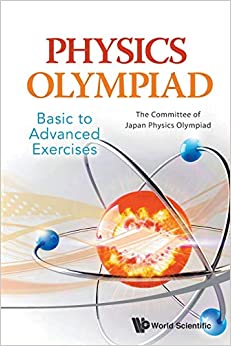Question
QUESTION 1 How does work relate to energy? a. Work is stored energy b. Work is a change in energy c. Work is a type
QUESTION 1
How does work relate to energy?
| a. | Work is stored energy | |
| b. | Work is a change in energy | |
| c. | Work is a type of energy | |
| d. | Work is a dark energy |
1 points
QUESTION 2
When is work done?
| a. | When force and displacement are perpendicular | |
| b. | When force and displacement are parallel | |
| c. | When force and displacement are perpendicular and there is no displacement | |
| d. | When force and displacement are parallel and there is no displacement |
1 points
QUESTION 3
A child pushes an ice cream cone 2.0 m across a level surface with 2 N of force. What is the work done on the ice cream cone by the child?
| a. | 0 J | |
| b. | 0.5 J | |
| c. | 2.0 J | |
| d. | 4.0 J |
1 points
QUESTION 4
A flight attendant pulls a flight bag in a complete circle with a distance of 250 m. A 30.0 N force is exerted on the bag at an angle of 50.0 above the horizontal. How much work is done on the flight bag?
| a. | 0 J | |
| b. | 3124 J | |
| c. | 4821 J | |
| d. | 8035 J |
1 points
QUESTION 5
Which of the following is the sum of kinetic and potential energy?
| a. | Total energy | |
| b. | Net energy | |
| c. | Non-mechanical energy | |
| d. | Mechanical energy |
1 points
QUESTION 6
A 3.0kg toy falls from a height of 10.0 m.Just before hitting the ground,what will be its potential energy? (Ignore air resistance)
| a. | 0 J | |
| b. | 0.98 J | |
| c. | 29.4 J | |
| d. | 294 J |
1 points
QUESTION 7
A 3.0 kg toy falls from a height of 10.0 m. Just before hitting the ground, what will be its kinetic energy? (Ignore air resistance)
| a. | 0 J | |
| b. | 0.98 J | |
| c. | 29.4 J | |
| d. | 294 J |
1 points
QUESTION 8
If both the mass and the velocity of a ball are tripled, the kinetic energy of the ball is increased by a factor of...
| a. | 3 | |
| b. | 6 | |
| c. | 9 | |
| d. | 27 |
1 points
QUESTION 9
The main difference between kinetic energy and potential energy is...
| a. | Kinetic energy involves position and potential energy involves a motion | |
| b. | Kinetic energy involves motion and potential energy involves position | |
| c. | Although both energies involve motion, only kinetic involves position | |
| d. | Although both energies involve position, only potential involves motion |
1 points
QUESTION 10
Which of the following equations is NOT an equation for power?
| a. | P =Fd/t | |
| b. | P =W/t | |
| c. | P =Fv | |
| d. | P = Fv/t |
1 points
QUESTION 11
What is the kinetic energy of a 0.135 kg baseball thrown at 40.0 m/s?
| a. | 2.7 J | |
| b. | 5.4 J | |
| c. | 53 J | |
| d. | 108 J |
1 points
QUESTION 12
What is the average poweroutput of a weight lifter who can lift 250 kg a distance of 2.0 m in 2.0 s?
| a. | 2450 W | |
| b. | 2000 W | |
| c. | 1450 W | |
| d. | 250 W |
1 points
QUESTION 13
A child and a sled with a combined mass of 50.0 kg slide down a frictionless hill. What type of energy does it have at the top of the hill (before moving) and at the bottom (while still moving)?
| a. | Top-kinetic /Bottom-Potential | |
| b. | Top-Potential /Bottom-Kinetic | |
| c. | Top-Potential+Kinetic /Bottom-Kinetic | |
| d. | Top-Potential /Bottom-Potential+Kinetic |
1 points
QUESTION 14
A child and a sled with a combined mass of 50.0 kg slide down a frictionless hill. If the sled starts from rest and has a speed of 2.0 m/s at the bottom, what is the total amount of energy at the bottom of the hill?
| a. | 100 J | |
| b. | 50 J | |
| c. | 25 J | |
| d. | 0 J |
1 points
QUESTION 15
A child and a sled with a combined mass of 50.0 kg slide down a frictionless hill. If the sled starts from rest and has a speed of 2.0 m/s at the bottom, what is the height of the hill?
| a. | 20 m | |
| b. | 2 m | |
| c. | 0.2 m | |
| d. | 0.02 m |
Step by Step Solution
There are 3 Steps involved in it
Step: 1

Get Instant Access to Expert-Tailored Solutions
See step-by-step solutions with expert insights and AI powered tools for academic success
Step: 2

Step: 3

Ace Your Homework with AI
Get the answers you need in no time with our AI-driven, step-by-step assistance
Get Started


